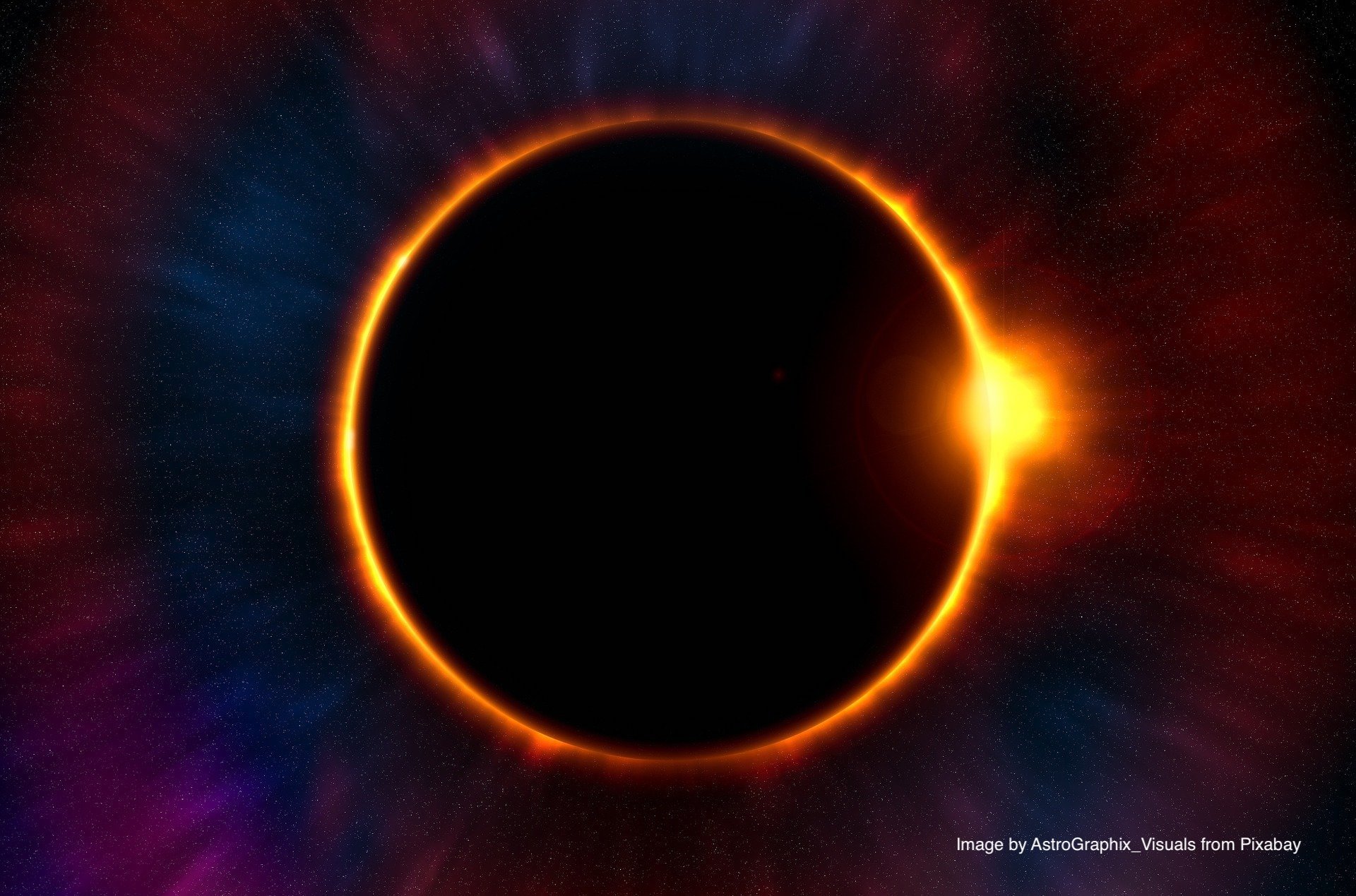The rare occasion of a total solar eclipse offers a time to reflect on the precious and vulnerable nature of life here on this "pale blue dot," as Carl Sagan famously described Earth. I've often wondered what early humans must have thought in these moments. Were they terrified? Did they fall to their knees in awe and wonder, begging the universe for mercy? Or dance wildly in the fields, abandoning their toil in the majesty of the moment?
One legend tells of the misfortune of the Chinese astronomers Ho and Hi, who were too drunk to warn the Emperor of the coming eclipse circa 2100 BCE, preventing him from mobilizing the beating of drums and shooting of arrows to chase away the "invisible dragon" that would occlude the sun. While the sun survived this mishap, Ho and Hi did not. Neither did Louis of Bavaria, the son of Charlemagne, who in 840 BCE literally died of fright upon viewing a solar eclipse.
Indigenous American cultures have a rich variety of interpretations and rituals around both lunar and solar eclipses, including omens of great transformation, moments of reverent prayer, and playful mythology about the sun and moon as passionate lovers.
And the celebrated 19th century astronomer Maria Mitchell told her "Vassar girls" as she led them west to view the 1878 eclipse, "you will see Nature as you never saw it before – it will neither be day nor night – open your senses to all the revelations."
I'm partial to this last story. Absent of fright and frivolity alike, it evokes early Yogic and Buddhist wisdom that invites a simple and clear instruction: pause, breathe, pay attention. Without the pull of opposites – not brightest noon nor darkest midnight – we are reminded that all things exist in a delicate balance. The more presence we bring to each arising moment, the more steady our perch on this pale blue dot. And perhaps with that steady perch, the more gentle we can become with earth and her precious resource of light and life.
Happy Eclipse Day!
~ Annie Moyer and the Sun & Moon family

